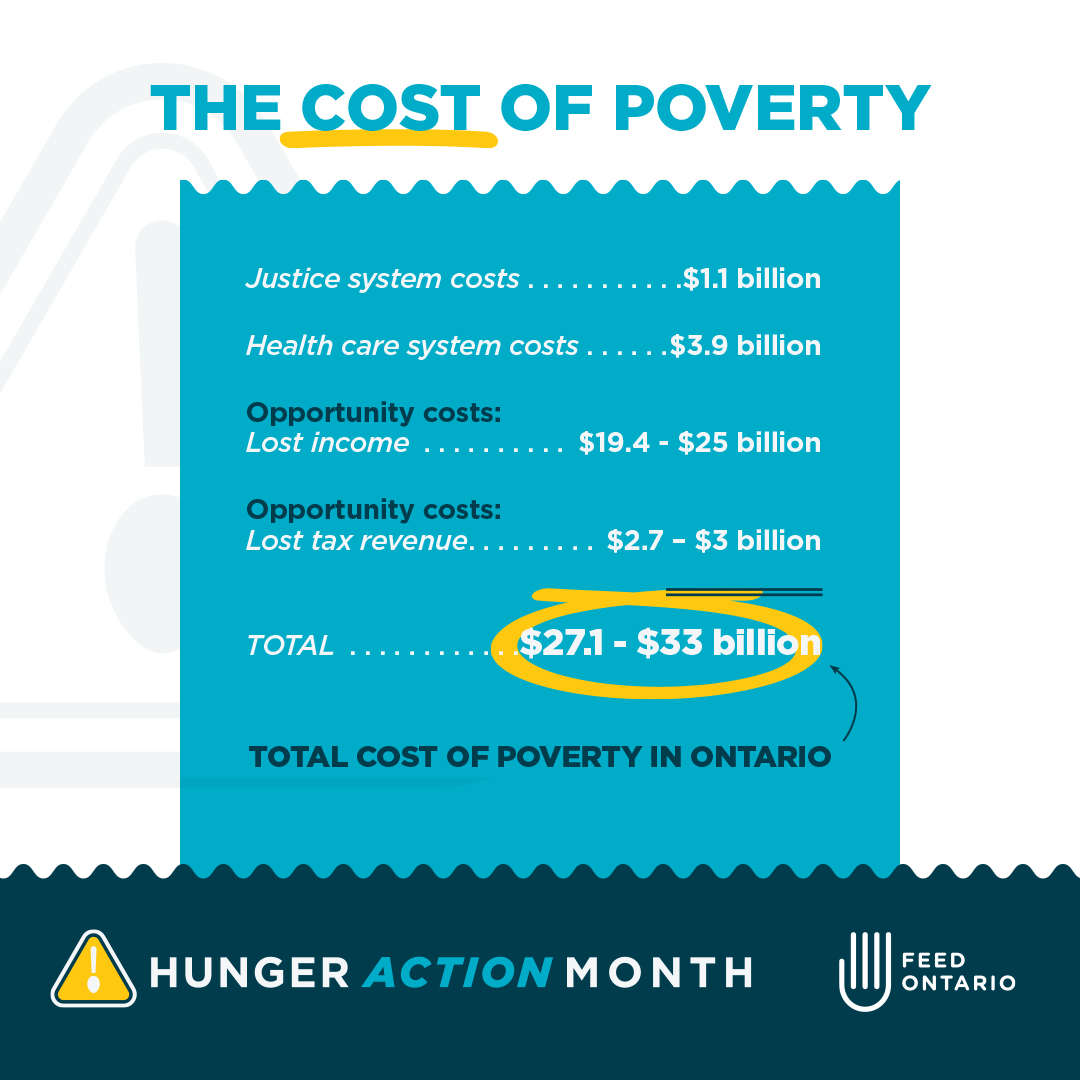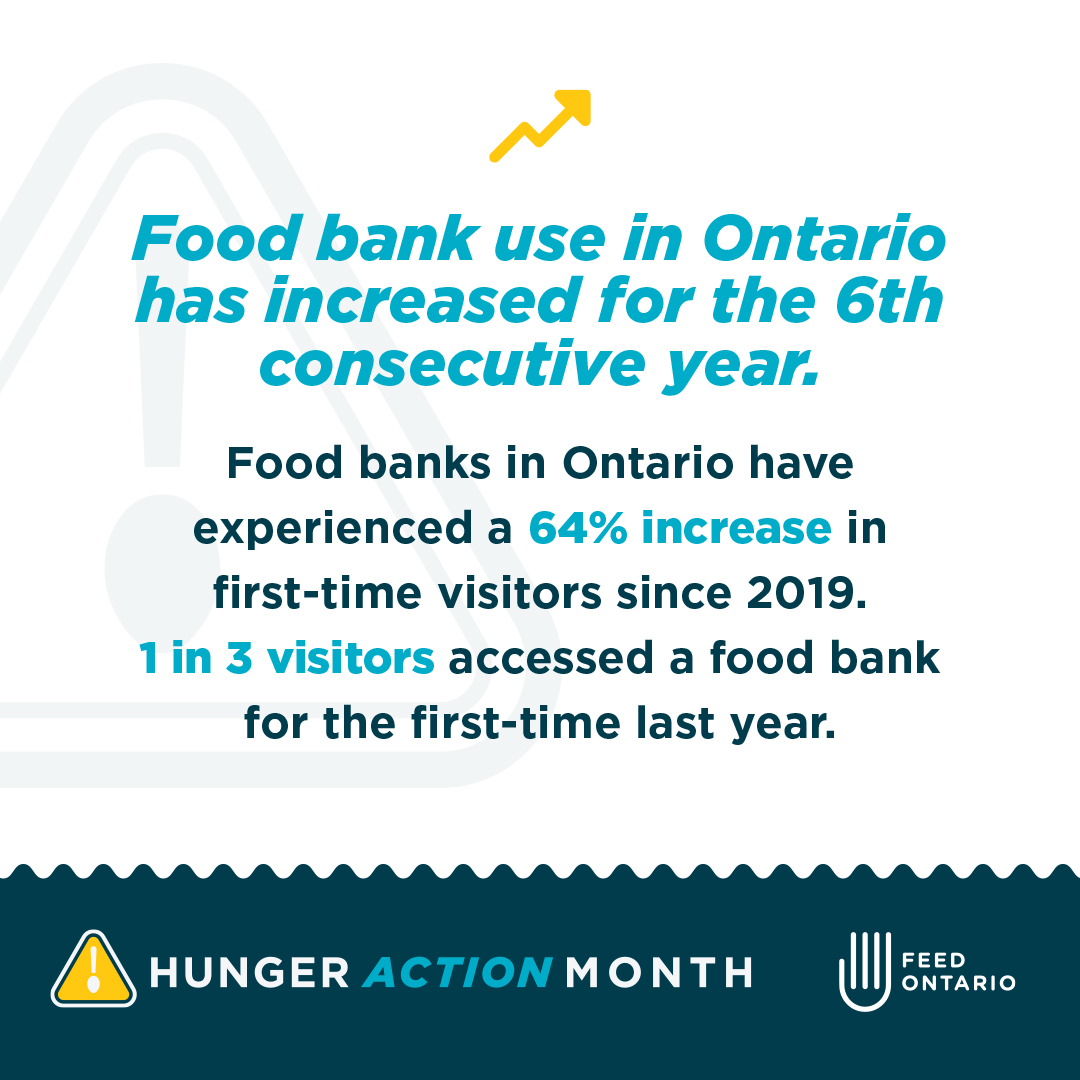How Can Social Services Help End Hunger?
How Can the Social Services Sector Help End Hunger?
By Ashley Quan
September 2023

What does hunger in Ontario look like?
Food insecurity in Ontario does not happen because there’s a lack of food, but because families and individuals do not have sufficient income to afford the food they need and will often cut down on groceries to pay other essential bills, like rent or housing costs. In Ontario alone, food banks are accessed by nearly 600,000 people who visit our services more than 4.3 million times over the course of a year. This is a staggering number that has only continued to grow with the rise in inflation and elevated living costs.
In understanding that food insecurity is not a ‘food’ problem, we know that addressing the root cause requires anti-poverty solutions. This includes solutions that support income security, affordability, and quality social services and worker support programs.

There is a great deal of overlap between who uses a food bank in Ontario and the social services sector: 59 per cent of those who walk through food bank doors rely on Ontario Works (OW) or the Ontario Disability Support Program (ODSP) as their primary source of income, and 16 per cent live in social housing. Part of the reason that so many social assistance recipients access food banks is because the financial support provided through these programs falls significantly below what is needed for a basic standard of living. In fact, two out of three food bank visitors report that they have less than $100 left each month after paying their housing and utilities costs. This leaves very little for all other bills, like telephone/internet, personal care items, and food, putting people in the position of having to make impossible choices between essential items every single day.
Why is the situation unsustainable?
It is a common misconception that food banks are the solution to food insecurity. Those who work and volunteer for food banks will be the first ones to say that is not the case. If you think of the social safety net as analogous to the healthcare system, food banks operate somewhat like paramedics. They function best when helping people in an emergency to get back on their feet or bridge the gap while they find more sustainable sources of assistance. The flexibility of a community-based, non-governmental response means that food banks can respond quickly to whoever comes through their doors needing help.
But food banks are neither designed nor resourced to take on the primary care doctor role in the social safety net. Rather, this role is meant for the government’s social services sector: providing care, resources, and life stabilization to those with long-term needs. Unfortunately, however, due to austerity measures at all levels of government over the past few decades, we have seen the value of the support provided by social assistance programs dwindle and little investment in building or maintaining social housing. In addition, cost-cutting measures in the private sector have resulted in an erosion in the quality of jobs available, pushing greater numbers of people onto social services to begin with. As a result, more and more people find that they must turn to food banks for longer-term support, and food banks have started to shoulder unprecedented demand that they are not equipped to withstand.
This is not a sustainable situation. Food banks by and large are not government-funded and are staffed primarily by volunteers. They rely heavily on the generosity of their communities for food and funding donations, but many community donors are also impacted by the growing housing and cost of living crisis, affecting their ability to give. And even if funding was available, the food bank model is not designed to provide people with the amount of food they need to truly be food secure. As a result of this increased demand, some food banks have had no choice but to start scaling back service provision or even close their doors altogether.
How can OMSSA Members support food insecure clients?

Beyond the needed provincial investments, CMSMs and DSSABs have some latitude to improve the customer service experience of those receiving social assistance. People living in poverty live in a heightened state of stress, so ensuring a safe, comfortable, and empathic environment is essential to helping people get back on their feet. Feed Ontario food banks also strive to create this environment and to support the work of social services by helping food bank visitors understand and navigate what can be a very complex and overwhelming system. Building a trusted relationship that puts the visitor’s best interests at the forefront of program delivery and support is essential to the work that we collectively do. One of the ways that Feed Ontario is actioning this priority is by working with our counterpart, Food Banks Canada, on their national food bank standards in such areas as client care, ethics, and safe food handling.
Food banks and municipal social services share the same goal: supporting vulnerable Ontarians to live a life of dignity. If you haven’t done so already, we encourage you to get in contact with your local food bank to find out how we can support each other’s work. We also encourage you to continue pushing for improvements to Ontario’s social assistance programs that ensure recipients are put in the best position to succeed, both while accessing the program and when they get back on their feet. Together, we can work to end hunger and poverty in Ontario.
About the Author
